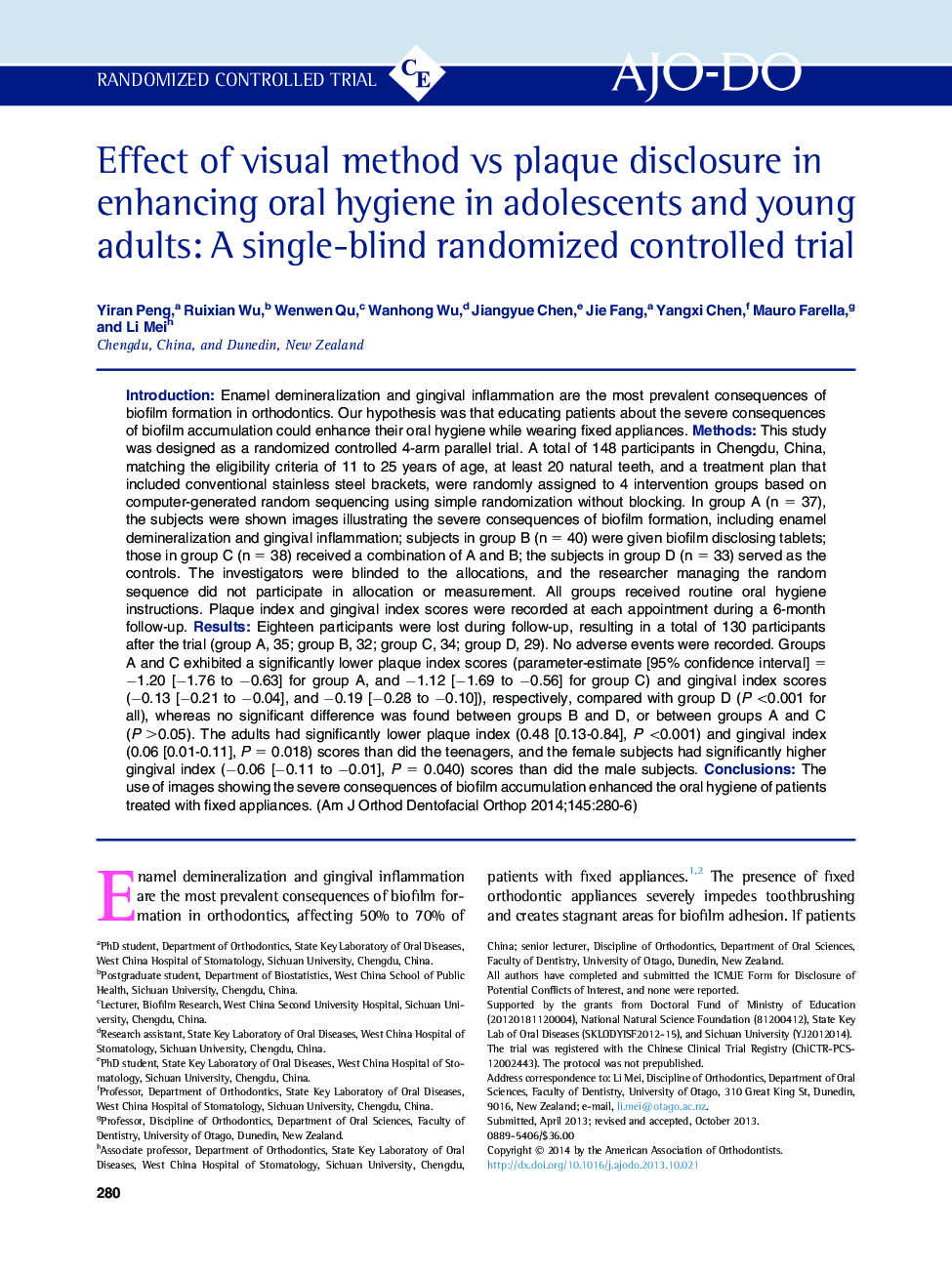| Article ID | Journal | Published Year | Pages | File Type |
|---|---|---|---|---|
| 3116582 | American Journal of Orthodontics and Dentofacial Orthopedics | 2014 | 7 Pages |
IntroductionEnamel demineralization and gingival inflammation are the most prevalent consequences of biofilm formation in orthodontics. Our hypothesis was that educating patients about the severe consequences of biofilm accumulation could enhance their oral hygiene while wearing fixed appliances.MethodsThis study was designed as a randomized controlled 4-arm parallel trial. A total of 148 participants in Chengdu, China, matching the eligibility criteria of 11 to 25 years of age, at least 20 natural teeth, and a treatment plan that included conventional stainless steel brackets, were randomly assigned to 4 intervention groups based on computer-generated random sequencing using simple randomization without blocking. In group A (n = 37), the subjects were shown images illustrating the severe consequences of biofilm formation, including enamel demineralization and gingival inflammation; subjects in group B (n = 40) were given biofilm disclosing tablets; those in group C (n = 38) received a combination of A and B; the subjects in group D (n = 33) served as the controls. The investigators were blinded to the allocations, and the researcher managing the random sequence did not participate in allocation or measurement. All groups received routine oral hygiene instructions. Plaque index and gingival index scores were recorded at each appointment during a 6-month follow-up.ResultsEighteen participants were lost during follow-up, resulting in a total of 130 participants after the trial (group A, 35; group B, 32; group C, 34; group D, 29). No adverse events were recorded. Groups A and C exhibited a significantly lower plaque index scores (parameter-estimate [95% confidence interval] = −1.20 [−1.76 to −0.63] for group A, and −1.12 [−1.69 to −0.56] for group C) and gingival index scores (−0.13 [−0.21 to −0.04], and −0.19 [−0.28 to −0.10]), respectively, compared with group D (P <0.001 for all), whereas no significant difference was found between groups B and D, or between groups A and C (P >0.05). The adults had significantly lower plaque index (0.48 [0.13-0.84], P <0.001) and gingival index (0.06 [0.01-0.11], P = 0.018) scores than did the teenagers, and the female subjects had significantly higher gingival index (−0.06 [−0.11 to −0.01], P = 0.040) scores than did the male subjects.ConclusionsThe use of images showing the severe consequences of biofilm accumulation enhanced the oral hygiene of patients treated with fixed appliances.
